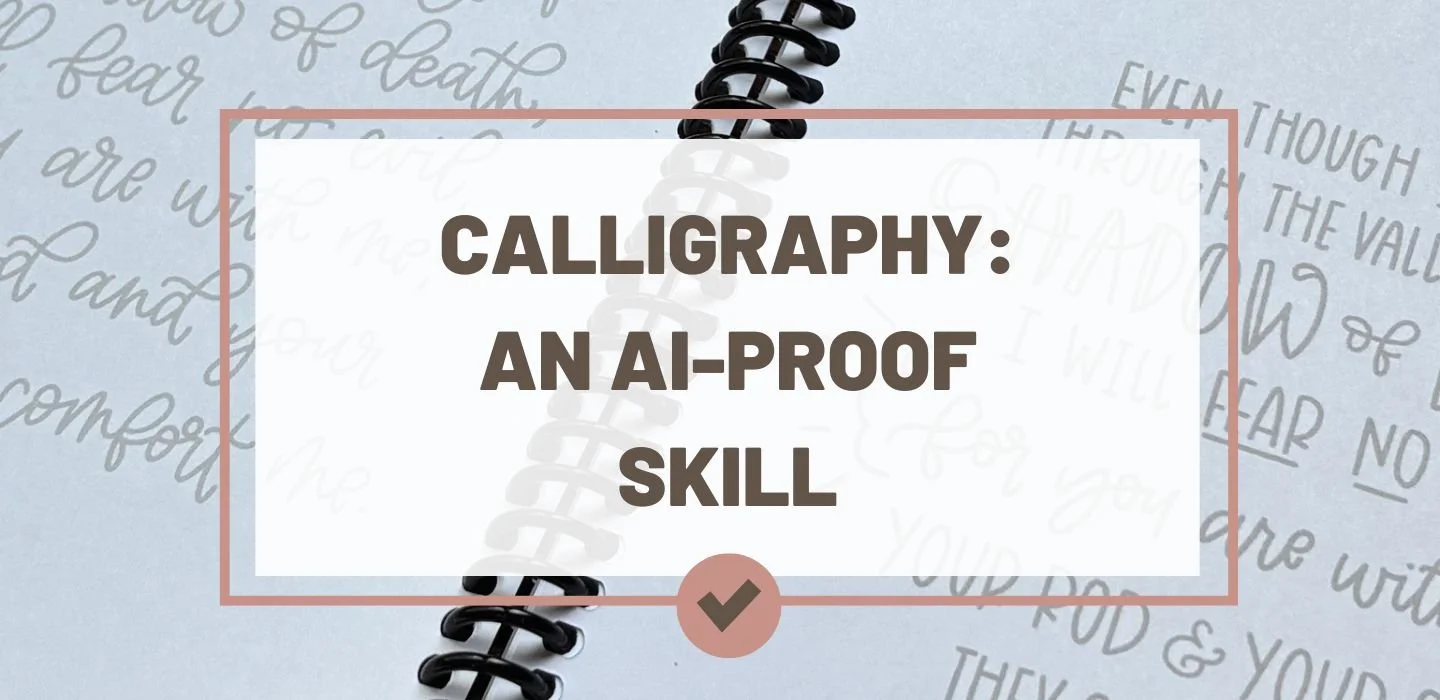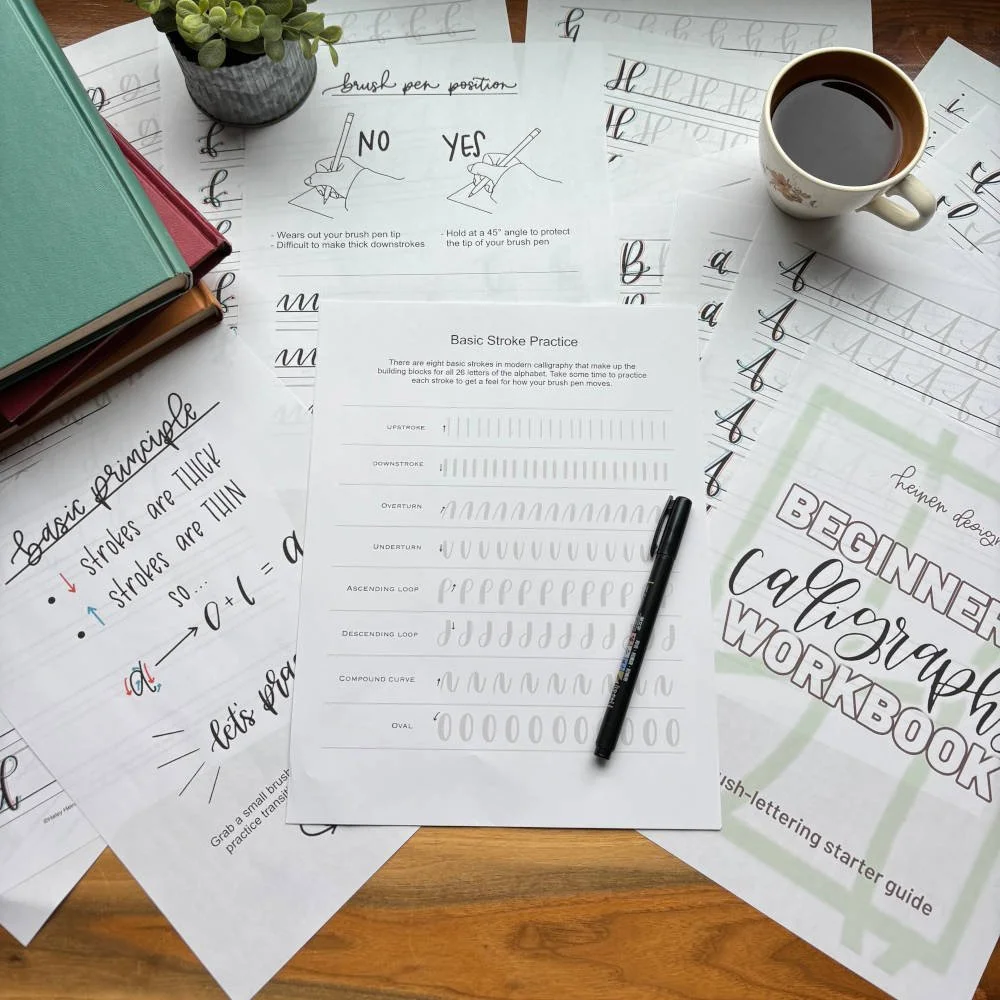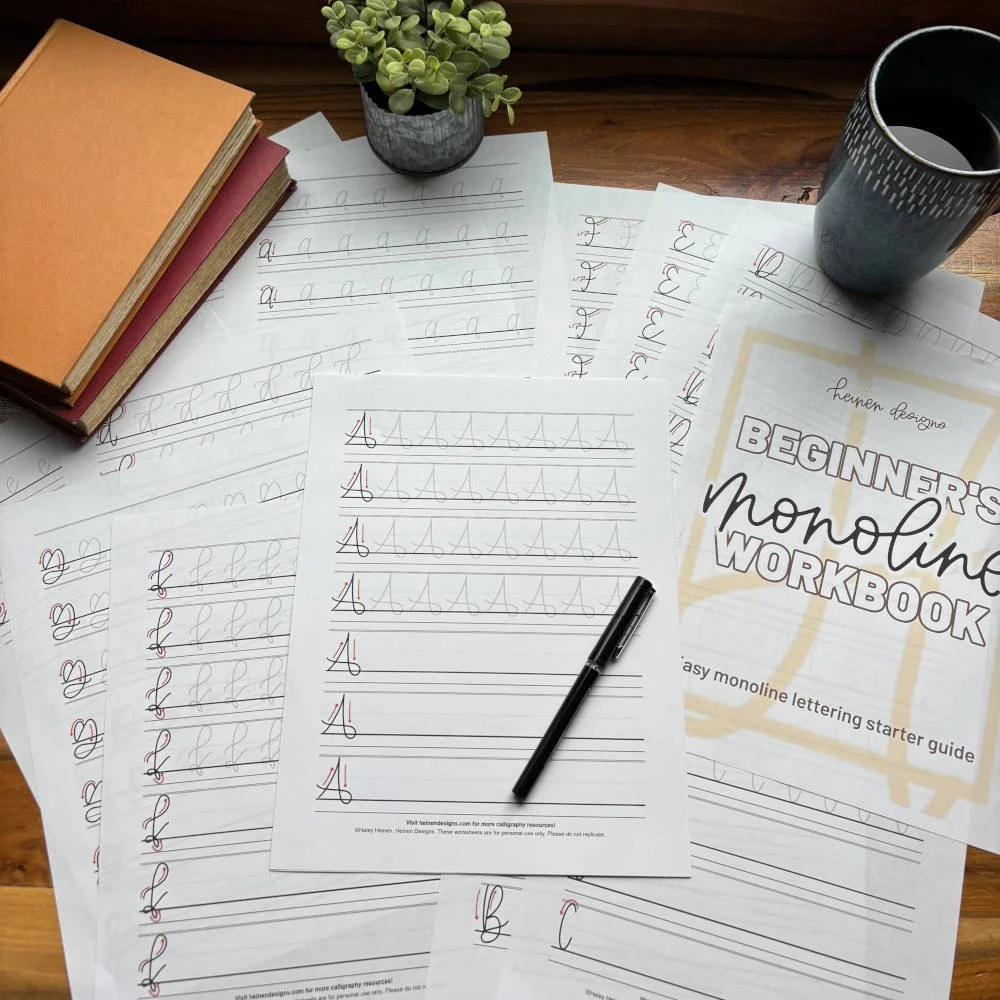Can AI Do Calligraphy? Why Hand-Lettering is an AI-Proof Skill
Artificial intelligence is everywhere these days. It writes, it draws, it even imitates creative styles at the click of a button. If you’ve been practicing hand-lettering or calligraphy, you may have wondered: is AI going to make my skill worthless? Can AI do calligraphy better than I can?
It’s a valid concern. AI has changed the creative landscape in huge ways. But here’s the good news: while AI can imitate certain lettering styles, it can’t truly replace the artistry, physicality, and emotional resonance of hand-drawn calligraphy. In fact, calligraphy is one of the most AI-resistant creative skills you can invest in.
Let’s dive into why.
Can AI Do Calligraphy?
The short answer is: kind of, but not really. AI can generate images that look like calligraphy. It can create digital fonts or brush-like strokes on screen. It can even mimic the thick-and-thin style of modern calligraphy.
Believe it or not, AI made this:
But here’s the key: AI doesn’t write. It doesn’t feel the drag of a brush pen across paper. It doesn’t experience the movement, rhythm, and intention behind each letter. At its core, AI lettering is just pixels that imitate handwriting.
Calligraphy, on the other hand, is alive. It’s made of subtle variations in pressure, natural imperfections, and the unmistakable signature of a human hand. That’s something AI can’t authentically reproduce.
The Human Experience of Calligraphy
One of the biggest reasons calligraphy is AI-proof is that it’s not just about the finished product; it’s about the experience of making it. When you pick up a brush pen and simply let your hand move across the page, you’re engaging in an artistic act that is inherently human.
There’s rhythm in each stroke, an ebb and flow between thick downstrokes and delicate upstrokes. There’s intentionality in slowing down enough to shape each letter. There’s joy in the tactile sensation of paper, ink, and pen working together.
This lived experience is as much a part of calligraphy as the final artwork itself. Watching someone letter live is mesmerizing because you’re witnessing skill, care, and creativity unfold in real time. Practicing calligraphy yourself can be meditative and personally rewarding. AI may generate something that looks like calligraphy, but it cannot feel or share in the experience of creation.
In other words, calligraphy is not just art you see. It’s art you do, art you feel, and art you experience. That human connection — between artist, process, and even audience — is impossible to automate.
Why Hand-Lettered Calligraphy is AI-Proof (or at Least AI-Resistant)
1. The Human Touch Can’t Be Faked
Every calligrapher knows that no two letters are exactly alike. Your hand pressure, speed, and rhythm make each piece unique. AI outputs, no matter how beautiful, often look a little too perfect, a little too uniform. It’s the imperfections that give calligraphy its soul, and that’s what people fall in love with.
2. Physical, Tangible Art
AI stays digital. Calligraphy lives in the real world. A handwritten quote on textured paper, a name inked in gold on a wedding invitation, or a personalized journal cover — these are tangible, hold-in-your-hands works of art. AI can create files, but it can’t physically hand-address an envelope or sign a keepsake.
3. Personalization & Storytelling
When people hire a calligrapher, they’re often looking for more than pretty letters. They want your story, your hand, and your artistic eye. A wedding invitation hand-lettered by a human carries far more emotional weight than something generated by a computer. Calligraphy is art tied to memory and meaning.
4. The Value of Process
Calligraphy isn’t only about the final product; it’s about the experience. Watching a calligrapher write in real time (whether at a wedding, an event, or on social media) is mesmerizing. AI can spit out a digital image, but it can’t create that same sense of awe and connection in the process.
5. Emotional Connection
There’s something deeply moving about receiving a handwritten note or a piece of original calligraphy. The flow of ink, the texture of the strokes, the human effort behind it — all of that makes the work feel more authentic and heartfelt than anything machine-generated.
6. Cultural & Historical Continuity
Calligraphy is more than art; it’s a tradition. From centuries-old illuminated manuscripts to Arabic and Chinese calligraphic forms, it’s deeply tied to human culture. AI can mimic the look of these scripts, but it can’t embody the weight of history and practice that comes with them.
7. Customization Beyond Fonts
AI often produces outputs that feel like fonts. A calligrapher, however, can adapt their style for the exact mood or purpose of a project — romantic, playful, elegant, bold. That adaptability and creative decision-making is where human artistry shines.
8. Skill as Personal Growth
Learning calligraphy isn’t just about making pretty letters. It’s about patience, discipline, and creative exploration. The practice itself — slowing down, focusing, expressing yourself — has value for the artist in a way AI can never replicate.
Where AI Might Support Calligraphers (Instead of Replacing Them)
It’s not all “us versus them.” AI can actually be a useful tool for calligraphers when used wisely:
Idea generation: AI can spark layout or style ideas you can adapt.
Digitization: AI-powered tools can help vectorize your lettering for scaling on products.
Business support: From drafting product descriptions to scheduling posts, AI can save time so you can spend more energy on your art.
Instead of fearing AI, think of it as a helper that supports your creativity, not a replacement for it.
Your Calligraphy Skill Is Far from Worthless
So, can AI do calligraphy? It can imitate the look of it, but it can’t replace the human artistry, storytelling, and tactile beauty of hand-lettered work. Your calligraphy skill is far from worthless; it’s one of the most AI-resistant creative crafts out there.
In fact, now is the perfect time to double down on developing your skills. People are craving authenticity, uniqueness, and the personal touch that only human hands can provide.
So keep practicing, keep creating, and remember: your hand-lettering isn’t just relevant. It’s irreplaceable.









If you are grieving, if you need hope, or if you simply want more time in God’s word but don’t know how, this book is for you. This is not a calligraphy how-to book, so much as it is a help through the deepest valleys, letting you trace and meditate on promises of hope when you need them most.
No calligraphy experience needed!
Each verse repeated in basic script and artistic style
Spiral-bound book for comfortable lettering
High-quality, smudge- and bleed-resistant paper
96 pages of easy-to-trace verses
Note: Please expect 1-2 weeks for shipping